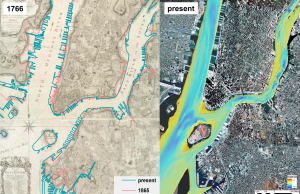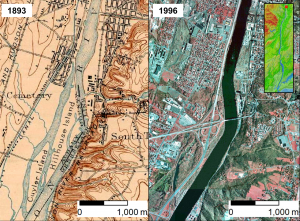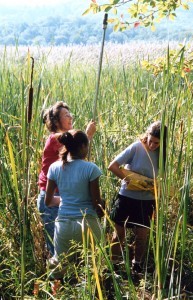In the marshes still left, Peteet and colleagues have tunneled into Hudson River mud looking for pollen, seeds and plankton to find out what the ecosystem looked like. Peteet, a botanist and climate scientist, has found that at about 400 years ago, native sedges and saltwater grasses gave way to cattails and common reeds, including the well-known Phragmites. The hardwood trees disappeared as farming developed; some grew back as factories replaced agriculture, except for the American chestnut, which was wiped out in the 1900s by an invasive fungus.
Four hundred years from today, what will the river look like? Sea levels will be higher, and depending on how New York City prepares for the rising waters, the coastline could significantly change. “That’s the biggest effect, I think,” said Nitsche. “I don’t think humans will do much more harm to the river. Maybe we’ll clean it up and restore it. That’s my optimistic view.”



